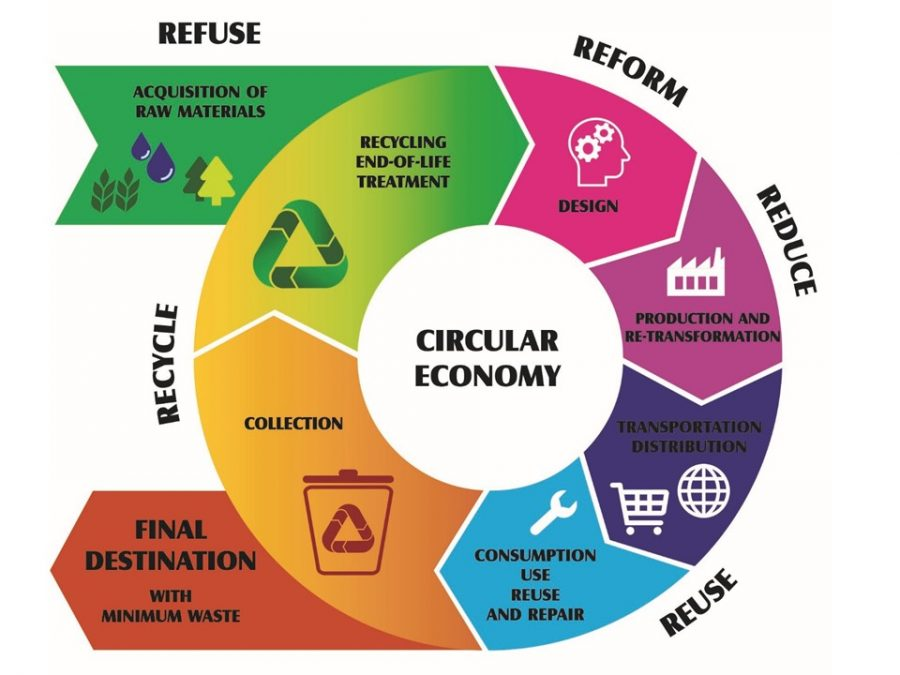What are The Three Principles of Circular Economy
Due to the ever-increasing environmental, social, and economic challenges the world is facing, governments and societies are in dire need of sustainable development. For years, the linear economy has been the go-to model for most countries to collect raw materials and transform them into different products for a limited time until they’re discarded as waste.
Unfortunately, this model has positioned us poorly to handle modern challenges, such as rising population, declining resources, and poor waste management. Fortunately, many economies and governments have stepped up to facilitate disruptive changes and integrate a new model into the mix – the circular economy.
In this article , we’ll dive deeper into this model and talk about the three core Circular Economy principles and what needs to be done to integrate them to reap the sustainability benefits.
What Is a Circular Economy?
A circular economy is a new model of production and consumption designed to address some of the biggest problems of the traditional take, make, consume, and dispose model at the foundational level. It requires governments, businesses, and consumers to rethink how we use our finite resources and design waste out of the system while following nature’s cycles and designs.
Here’s a diagram illustrating how the circular economy works according to the Porto Protocol:


The Three core Principles of Circular Economy
According to the Ellen MacArthur Foundation, Reduce, Preserve and Regenerate are the three core circular economy principles:
1. Reduce - Design Out Waste and Pollution
At its core, a circular economy is centered on the idea that there’s no such thing as waste. Therefore, the first principle is about understanding that pollution and waste are simply consequences of flaws in our designs. As a result, we need to discover innovative ways to design things without negative consequences. The traditional linear economic model has prompted businesses and consumers to take an end-of-life approach to waste management. For instance, when newer products enter the market, they replace their older counterparts and are classified as waste. The same labeling goes for food and other consumer products with limited lifecycles.
Simply put, this principle aims to harness new materials and solutions from existing products to minimize waste and pollution. Recapp is one of the major players working to integrate the circular economic model in UAE through its free disposal and recycling program.
2. Preserve – Keep Products and Materials in Use
The second principle of a circular economy is about preserving finite resources. Simply put, we need to ensure that the resources we extract from our planet to build different products and materials must be kept in the economy for as long as possible. In other words, companies are revamping their development strategies to make products and components that can be repaired, reused, or remanufactured.
However, there’s more to this principle than simply making things last longer. It also aims to minimize the number of products or materials ending up in landfills and waste, especially those with short lifespans, such as packaging and food. A great example of this is Abu Dhabi’s Points for Plastic scheme that offers free bus rides from the City’s Integrated Transport Center depositing single-use water bottles.
3. Regenerate – Restore Nature Cycles and Systems
The Linear Economic model is based on economies trying to do less harm to the environment. However, the circular model aims to go one step further and do good for the environment. Hence, the final principle is based on restoring nature cycles and systems by taking a cyclical approach.
The reason there’s no waste in nature is that all natural cycles work in closed loops, meaning there are nearly zero resource losses throughout the process. The circular model aims to mimic this system by creating a model that supports, improves, and protects the global ecosystem.
When it comes to organic waste management, the linear approach has only led to water and energy wastage during the production cycle and environmental degradation during the breakdown cycle. Therefore, the third principle of a circular economy focuses on returning valuable resources to the ecosystem instead of sending them into waste facilities, such as landfills.
Conclusion
So, there you have it – the three core circular economy principles you need to know about. Since the industrial revolution, economies have followed a linear model of production and consumption, which has resulted in a tremendous amount of waste and environmental damage.
However, the circular model aims to reverse this damage by introducing a regenerative industrial model designed to improve resources’ performance, reduce greenhouse emissions, and reduce all the negative externalities during production and waste cycles.
At Recapp, we aim to empower our users, partners and community regarding the different ways they can reduce plastic waste and lead a more eco-friendly lifestyle. We are among the key players in the UAE and the Middle East slowly integrating the circular model into our economy via awareness and our free general waste recycling program.
